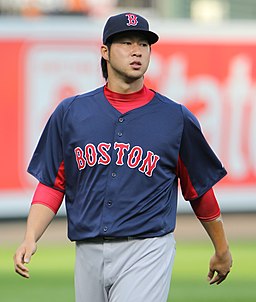About a month ago, Joel received a few pairs of socks from the kind folks at Injinji for us to try out and share our thoughts on. The pair that arrived in my mailbox were from the Outdoor Series, original weight, crew length.
Right from the start I can describe my experience with these socks as weird. The concept of these socks (pictured on my foot at right) is one I just hadn't considered before. It seemed novel and I wasn't exactly sure I could take the concept seriously at first. Putting the socks on added to the comical nature of the experience. Being inexperienced with toesocks, I found them a bit more difficult than expected to get on my feet, even more so than, say, putting on a glove. My toes just aren't used to fitting into sleeves.
Once the socks were on my feet felt very, very different from anytime I can recall. My initial reaction was that i didn't like the feeling, as if I had thong flip-flops on with a thing between each toe. But for the sake of being open to the idea, I asked, is it uncomfortable? The answer was certainly no. Strange, yes, uncomfortable no.
As I wear compression sleeves on most runs, I realize the crew length isn't ideal for me, as I don't really want any overlap between my socks and my compression sleeves. I realize that Injinji makes both mini-crew (shorter) versions of these socks and also a version that has compression built in.
Injinji recommends on it's packaging that you "be patient with your first wear and allow your feet to adjust". This is good advice, because when I put on my shoes, the strange feeling didn't go away, rather, was more pronounced. Firstly, I think because the socks were new, they felt very slippery in my shoe. Secondly, I felt like there was just plain more room in my shoe. This is exactly the opposite of what I had imagined I would have felt. I would have guess that, with the extra material, the fabric would have felt bunched and uncomfortable in my shoes; definitely not the case.
We had a 10-miler planned for the run, and 2 miles into it, I wasn't thinking about the socks at all. This was a good thing... as my original feelings had me imagining feeling that strange feeling the whole run. For the most part, in the early part of my run, I really didn't feel any major differences between these socks and the normal sock selections I run with. This was surprising.
In the later miles of the run, as fatigue started to set in, I did actually notice a difference, and it was a really nice difference. I don't tend to have any major issues with my feet. I don't get blisters, I don't get hot spots, so I cannot speak to these socks ability to ward of those blights. I can say, however, that the feeling of being able to freely splay my toes is much more pronounced in these socks, leading to a heightened sense of
proprioception. To be clear, the experience is a subtle one, but one that is certainly welcome in the latter miles of a run when you're keen to keep your form in check.
I also tend to sweat quite a bit when I run, so a sock that can handle moisture is an important thing to me. Injinji claim "Superior Moisture Management" and on that point I certainly agree. My initial run with the Injinji toe socks yielded no definitive data one way or another with respect to the moisture management. There was no issue, but also no situation to gauge the superior nature of this moisture management. A second run with these socks presented a good test situation, however. Firstly, it has been raining leading up to the run, so there was moisture on the ground and in the air. Secondly, there was a chill to the air. Generally speaking, I don't wear anything but lightweight socks, and typically stay away from any wool or synthetic wool unless it is winter. This is important because, thirdly, I was working very hard on this run and sweating a lot, so the wet with the chill in the air gave me the opportunity to see how dry and how warm my feet would be. Well, my feet were quite warm (too warm for my tastes, I would definitely go with the lightweight socks in the future) and surprisingly dry. The sock itself showed no sign of heaviness and did not feel as wet as it should have given the situation. I was quite impressed.
In summary, while I felt very strange about these socks at first, they shined in all the areas they claim to shine. I don't think purchasing these socks is going to be the decided factor in you achieving your PR, but if you're looking for socks that are going to help you do that, you've got some other things you'll need to deal with. The benefits of these socks are subtle, but they are real. They do take some getting used to, and after two runs with them, I am not quite sure I am there yet... but I no longer dismiss the idea as novel and can definitely see myself wearing Injinji socks on future runs.
Related Posts:
Review: Injinji Toesocks
Review: Feetures! Elite Socks
Review: Injinji Toesocks (outdoor series)






